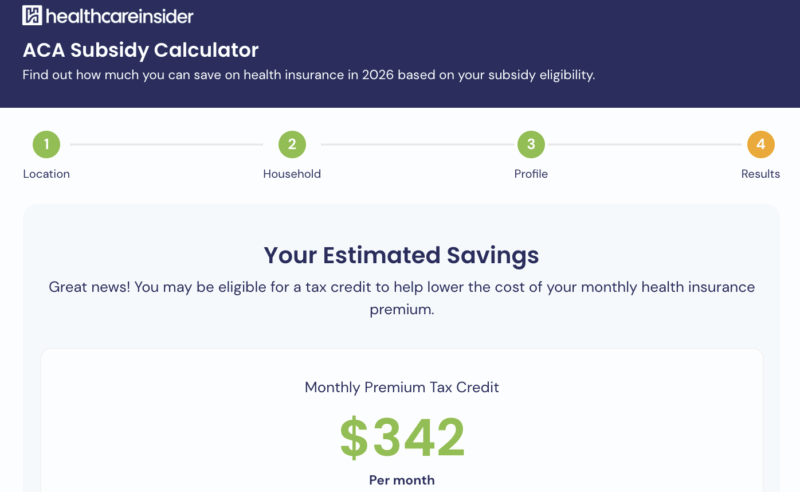Written by Hal Levy
Healthcare Writer
Reviewed by Ronnell Nolan
Expert Reviewer
We want to help you make educated healthcare decisions. While this post may have links to lead generation forms, this won’t influence our writing. We adhere to strict editorial standards to provide the most accurate and unbiased information.
If you’re having a tough time financially or emotionally, there are ways to bend certain health insurance rules. A hardship exemption is the key to getting help.
From 2014 through 2018, hardship exemptions were mostly used for avoiding the individual mandate tax penalty. The penalty no longer exists in 47 states as of 2019, so the need for hardship exemptions is limited.
There are still a few times when hardship exemptions come into play. This page will teach you what is considered a hardship, how you can get a hardship exemption, and when you’d need to use one.
How Would You Use a Hardship Exemption?
The primary use for hardship exemptions in 2019 or later is to enter a catastrophic plan after turning 30 years old. Since catastrophic plans are limited in the help they provide, they are normally reserved for people under the age of 30 who have fewer health needs.
Catastrophic plans have very low monthly premiums, and include all ACA benefits, but generally have extremely high deductibles ($7,900 in 2019). They limit your financial exposure in case of a major accident or illness but assure that you will pay out-of-pocket for most other issues.
Historic Hardship Exemptions: In previous years, hardship and affordability exemptions were used to excuse someone from paying the individual mandate, or the “Obamacare tax penalty.” States which have created their own individual mandate still make use of their own hardship exemptions.
What Counts as a Hardship Exemption?
The federal government has listed multiple ways to get a hardship exemption. You can request one if:
- You face eviction or foreclosure of your home or were already evicted
- You are or were homeless
- A utility company, including electric, water or gas, sent you a shut-off notice
- You experienced domestic violence
- A family member died
- The exemption covers months when the death prevented you from getting health insurance.
- You experienced a natural or human-caused disaster
- This has to cause a serious disruption to your life or create significant damage to your property.
- Government agencies sometimes grant these before you even apply, such as in the case of Hurricane Harvey.
- You filed for bankruptcy
- You had medical expenses you couldn’t pay
- You had unexpected increases in necessary expenses related to care for an ill, disabled, or aging family member
- You were determined ineligible for Medicaid because your state didn’t expand eligibility for Medicaid under the Affordable Care Act
- In 2019, this includes: Alabama, Florida, Georgia, Idaho, Kansas, Mississippi, Missouri, Nebraska, North Carolina, Oklahoma, South Carolina, South Dakota, Tennessee, Texas, Utah, Wisconsin, and Wyoming.
- Your yearly income will need to be between 100% and 138% of the federal poverty level; meaning you would have received Medicaid had your state of residence participated.
- You need to apply for Medicaid and subsequently receive a “denial of eligibility notice”.
- You had another hardship or “personal circumstances” issue around obtaining health insurance, which you can describe in a form.
- In general, the unspecified hardship guidelines are:
- Experiencing difficult financial or domestic circumstances, including an unexpected natural or human-caused event, leading to a significant, unexpected increase in essential expenses that prevented you obtaining coverage under a qualified health plan;
- The expense of purchasing a qualified health plan would have caused you to experience serious deprivation of food, shelter, clothing or other necessities; or
- You experienced other circumstances that prevented you from obtaining coverage.
- In general, the unspecified hardship guidelines are:
- Medicaid and CHIP denied coverage to a child you claim as a tax dependent, and a court order requires someone else to provide medical support to the child.
- As a result of an eligibility appeals decision, you may enroll in a qualified health plan (QHP) through the Health Insurance Marketplace, lower cost of monthly premiums, or receive cost-sharing reductions for the time you weren’t enrolled in a QHP through the Marketplace.
Hardship determinations are separate from that of a Special Enrollment Period. Even if you receive an exemption, it does not affect whether or not you can actually join a health insurance plan outside of the annual Open Enrollment Period.
How Can You Get a Hardship Exemption?
You generally need to download the appropriate form from healthcare.gov. Once you’ve completed the form, mail it to the address on the form or get in touch with an agent for help.
Approximately 11 million households claimed an exemption in 2017, so exemptions aren’t difficult to get.
Regardless, hardship and affordability exemptions aren’t granted automatically. The time it takes to review an application depends on how complicated the situation is.
After you’ve applied, you’ll receive a notice by mail with a decision on your application. If you do receive a hardship or affordability exemption, your letter will come with a unique Exemption Certificate Number. You’ll use that number when applying for coverage or referencing your exemption. The IRS may ask for that number during tax time on Form 8965.
State-Level Hardship Exemptions:
States which introduced a local individual mandate penalty have created their own hardship exemptions. These excuse you from local tax penalties, but may not affect whether or not you can join a catastrophic plan.
- The exemptions for DC residents are different than national standards. They’re tied to income and age.
- The New Jersey and Massachusetts exemption rules are nearly the same as national rules.
- CA: California’s marketplace, called Covered California, has extensive rules of its own, based on religion and affordability while also mirroring national rules.
How Long Do Hardship Exemptions Last?
Exemptions generally last during the months that you were affected by the hardship, plus one month before and after. In your application, you can specify how long this time period is meant to be.
Notably, exemptions usually apply to your entire tax household, whether or not they were directly involved. In fact, the state of California in particular cannot process your application unless you list everyone who’s on your tax return.
Thank you for your feedback!


 by
Ronnell Nolan |
Updated on
August 18, 2025
by
Ronnell Nolan |
Updated on
August 18, 2025 




